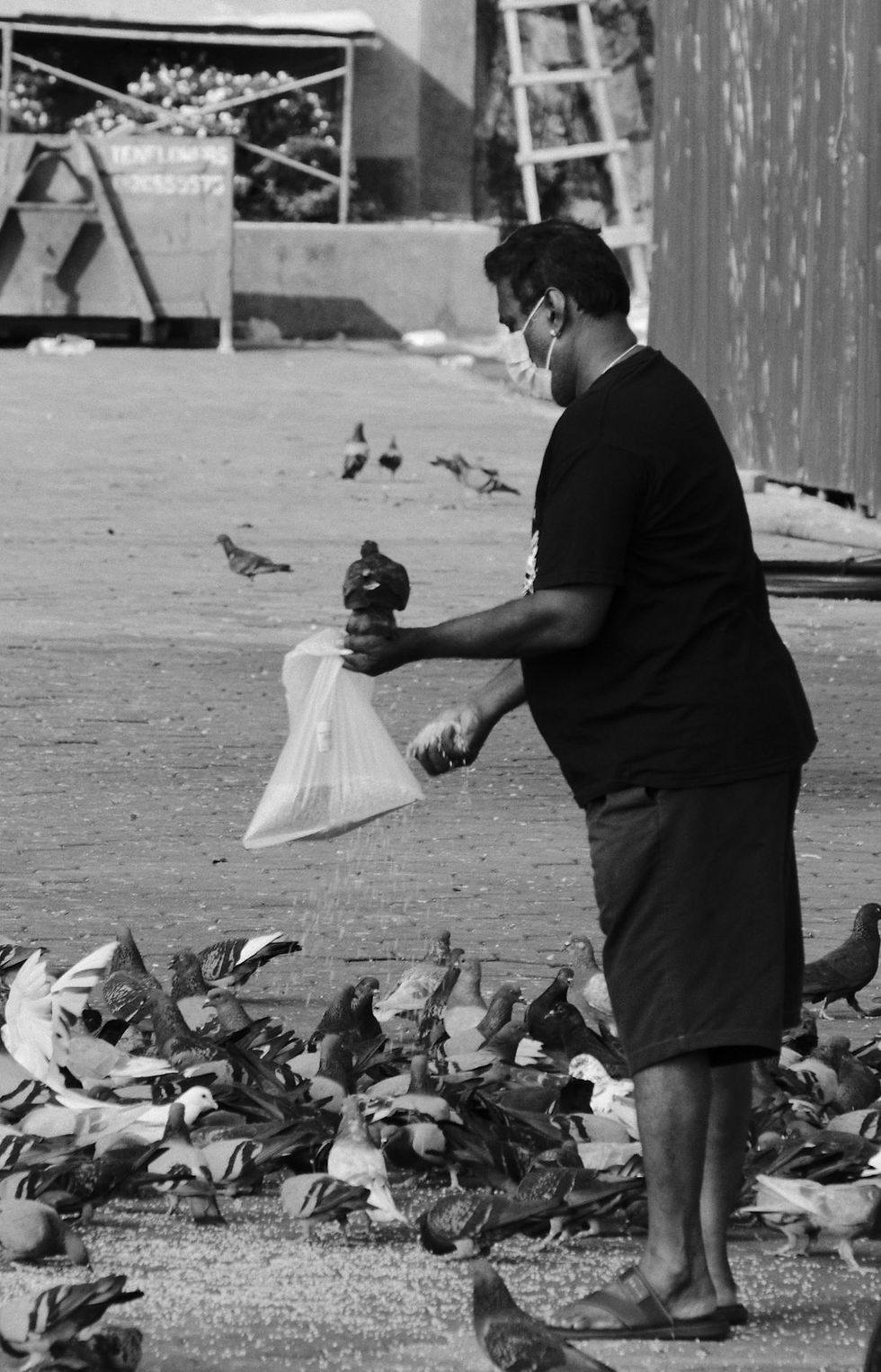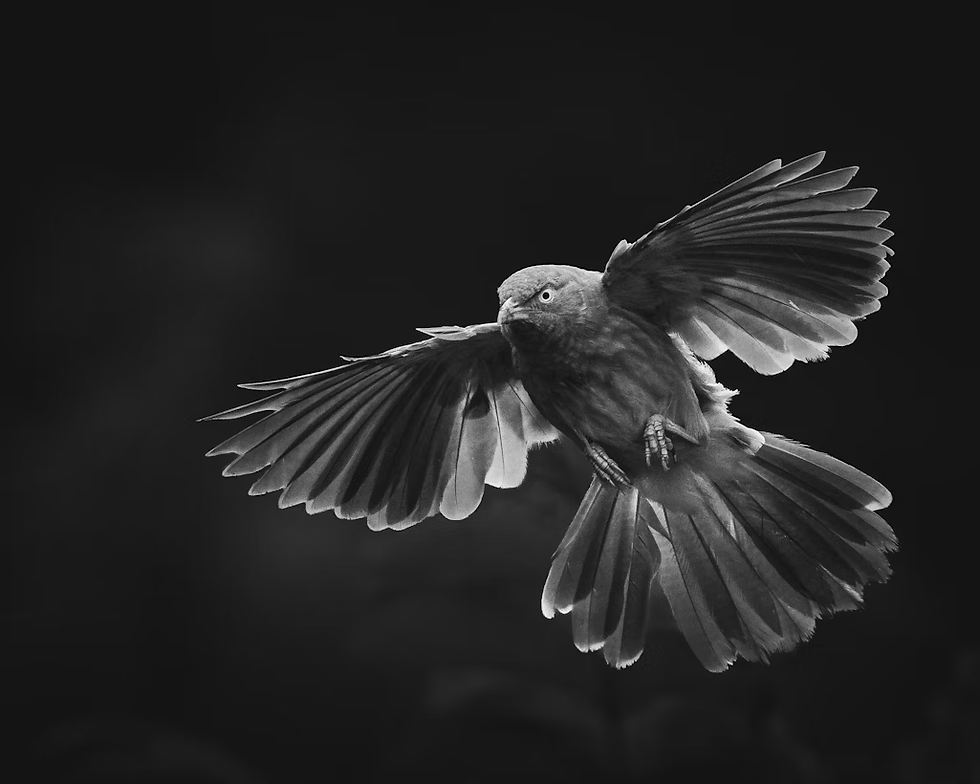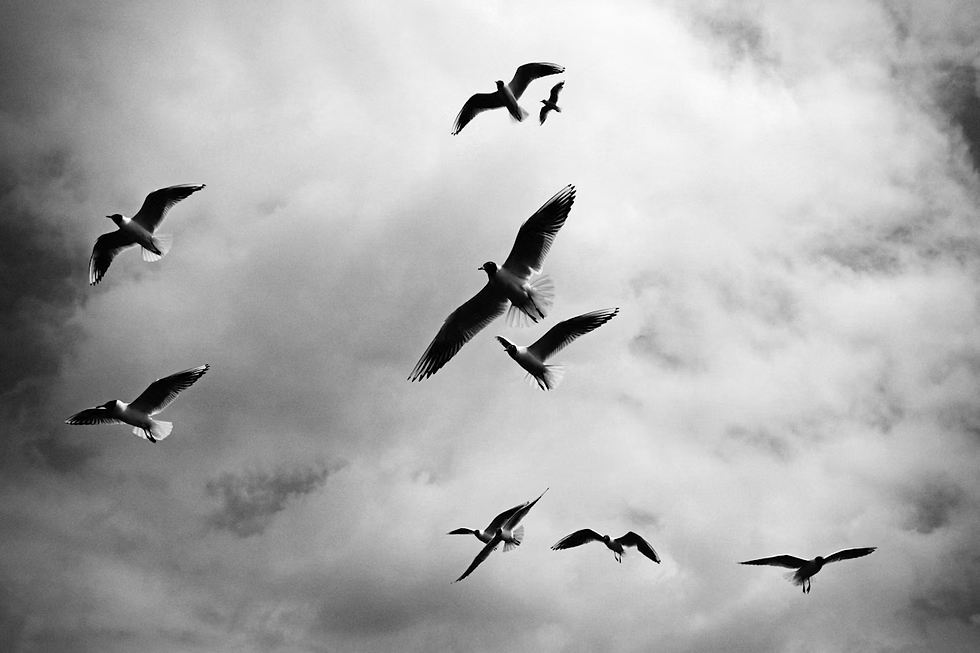Overcoming Ornithophobia with Exposure Therapy: A Step-by-Step Guide
- Emma Calden
- 4 days ago
- 5 min read

Ornithophobia, or the fear of birds, is a specific phobia that can have a significant impact on daily life. Whether triggered by past traumatic experiences, learned behavior, or evolutionary instincts, the fear of birds can lead to anxiety, panic attacks, and avoidance of situations where birds might be present. One of the most effective ways to overcome this phobia is through exposure therapy, a form of cognitive-behavioral therapy (CBT) that helps individuals gradually confront their fear in a controlled, manageable way. In this article, we’ll take a closer look at how exposure therapy works for ornithophobia and provide a step-by-step guide to using this technique for overcoming the fear of birds.
What Is Exposure Therapy?
Exposure therapy is a psychological treatment that involves gradually and systematically exposing an individual to the object of their fear—in this case, birds—in a safe and controlled environment. The goal is to reduce the emotional response to the fear trigger by repeatedly exposing the individual to it. Over time, the individual learns that their fear is disproportionate and that birds are not as threatening as their mind might make them seem.
For people with ornithophobia, exposure therapy helps desensitize the mind to the sight, sound, and presence of birds. By repeatedly confronting the fear, individuals can break the cycle of anxiety and avoidance that often accompanies this phobia. This process helps retrain the brain to respond more calmly to birds, reducing the overall intensity of the fear.
How Exposure Therapy Works for Ornithophobia
Exposure therapy is based on the principle of habituation, which is the idea that the more we are exposed to something, the less fearful we become of it. The therapy takes a gradual, step-by-step approach to ensure that the exposure feels manageable and not overwhelming. This method prevents the individual from becoming overwhelmed by the fear, which could potentially lead to greater anxiety or reinforcing the phobia.
The Key Steps of Exposure Therapy for Ornithophobia:
Identify the Fear Hierarchy:

The first step in exposure therapy is to create a fear hierarchy, a list of situations that involve birds, ranked from least anxiety-provoking to most anxiety-provoking. This hierarchy helps guide the therapy process, starting with less intense exposures and gradually moving toward more challenging situations. For example, someone with ornithophobia might rate the following scenarios:
Looking at pictures of birds (least fearful)
Watching a video of birds
Seeing birds from a distance in a park
Watching birds in a controlled environment, like a bird sanctuary
Being in close proximity to birds
Touching or interacting with birds (most fearful)
The hierarchy ensures that the person can progress at their own pace, avoiding overwhelming situations that could reinforce the fear.
Start with Low-Anxiety Situations:
The next step in exposure therapy is to begin with the least anxiety-provoking situation on the fear hierarchy. This could involve looking at pictures of birds or watching videos of birds. At this stage, the person should focus on observing their feelings of discomfort and practicing relaxation techniques, such as deep breathing, to calm their anxiety. The goal is to sit with the discomfort without resorting to avoidance or escape behaviors.
For example, a person might watch a short video of birds for five to ten minutes, paying close attention to their thoughts and feelings as they do so. If anxiety arises, they can use coping mechanisms like mindfulness or deep breathing to stay calm. Once they are able to tolerate this situation with minimal anxiety, they can move on to the next step in the hierarchy.
Gradually Increase Exposure:
Once the person feels comfortable with the initial exposure, they can move on to more challenging situations, such as watching birds in a park from a distance or seeing them in a bird sanctuary. This gradual exposure allows the person to build confidence and resilience, demonstrating that their fear is manageable and that they can cope with the presence of birds.
As exposure progresses, the individual may begin to observe birds from a closer distance or in more dynamic environments. For example, they might visit a zoo where they can observe birds flying around in aviaries or interact with birds in a controlled setting. At each stage, the person should take note of their anxiety levels and use relaxation techniques to remain calm. The key is to move forward only when the individual feels ready, ensuring that each step is taken at a comfortable pace.

Repetition and Consistency:
One of the most important aspects of exposure therapy is repetition. Exposure to birds needs to occur frequently to help the brain become desensitized to the fear. This repeated exposure helps reinforce the idea that birds do not pose a threat, and it gradually reduces the automatic fear response.
Consistency is crucial—exposure should take place regularly, ideally multiple times a week, to create a lasting change in the brain’s response to birds. Over time, the person will notice a reduction in the intensity of their anxiety when they encounter birds. Repetition also helps individuals build resilience, as they learn that their fears are often exaggerated and that they are capable of handling discomfort.
Challenge High-Anxiety Situations:

Once the individual has become comfortable with moderate levels of exposure, they can start tackling the more challenging situations higher up on the hierarchy, such as being in close proximity to birds or interacting with them directly. This might involve visiting a bird park where they can feed birds, or attending a bird-handling session in a controlled environment.
The most challenging step for many people is interacting directly with birds. This could involve feeding or gently touching a bird, but only after significant desensitization to the sight and presence of birds has been achieved. At this stage, it’s important for the person to stay calm and use the coping strategies they’ve learned throughout the process.
Maintenance and Generalization:
Once the individual has successfully moved through the entire hierarchy and feels more at ease with birds, it’s important to maintain the progress made through ongoing exposure. This could involve periodically returning to situations that still elicit mild anxiety, such as visiting a park with birds or watching bird videos. Regular exposure will help prevent the phobia from resurfacing.
Additionally, it’s helpful to practice generalizing the learned behaviors to other contexts. For example, if the individual becomes comfortable with birds at a sanctuary, they might try to visit a new location, like a local park or backyard, where birds might be present. This ensures that the desensitization process extends beyond the therapy setting and into real-world scenarios.
The Role of a Therapist in Exposure Therapy
While exposure therapy can be done on your own, working with a licensed therapist who specializes in CBT and phobias can be incredibly beneficial. A therapist can guide you through the process, providing support and reassurance during challenging exposures. They can also help you identify the best coping strategies to manage your anxiety and make sure you progress through the steps at an appropriate pace.
A therapist can also provide real-time feedback if you experience overwhelming fear, helping you manage the emotional intensity and adjust the exposure to make it more manageable. Additionally, therapists can assist with cognitive restructuring, helping you reframe irrational thoughts and beliefs about birds to reduce the fear response.
Conclusion: Exposure Therapy as a Powerful Tool for Overcoming Ornithophobia
Exposure therapy is a highly effective treatment for overcoming ornithophobia, enabling individuals to confront their fear of birds in a safe and controlled environment. By following a gradual, step-by-step approach—starting with low-anxiety situations and progressing to more challenging exposures—individuals can desensitize their fear response and learn that birds are not a threat. With regular practice and support, exposure therapy can help individuals reduce their anxiety, improve their quality of life, and eventually conquer their fear of birds altogether. Whether done independently or with the guidance of a therapist, exposure therapy provides a structured path to freedom from ornithophobia.
.png)










































